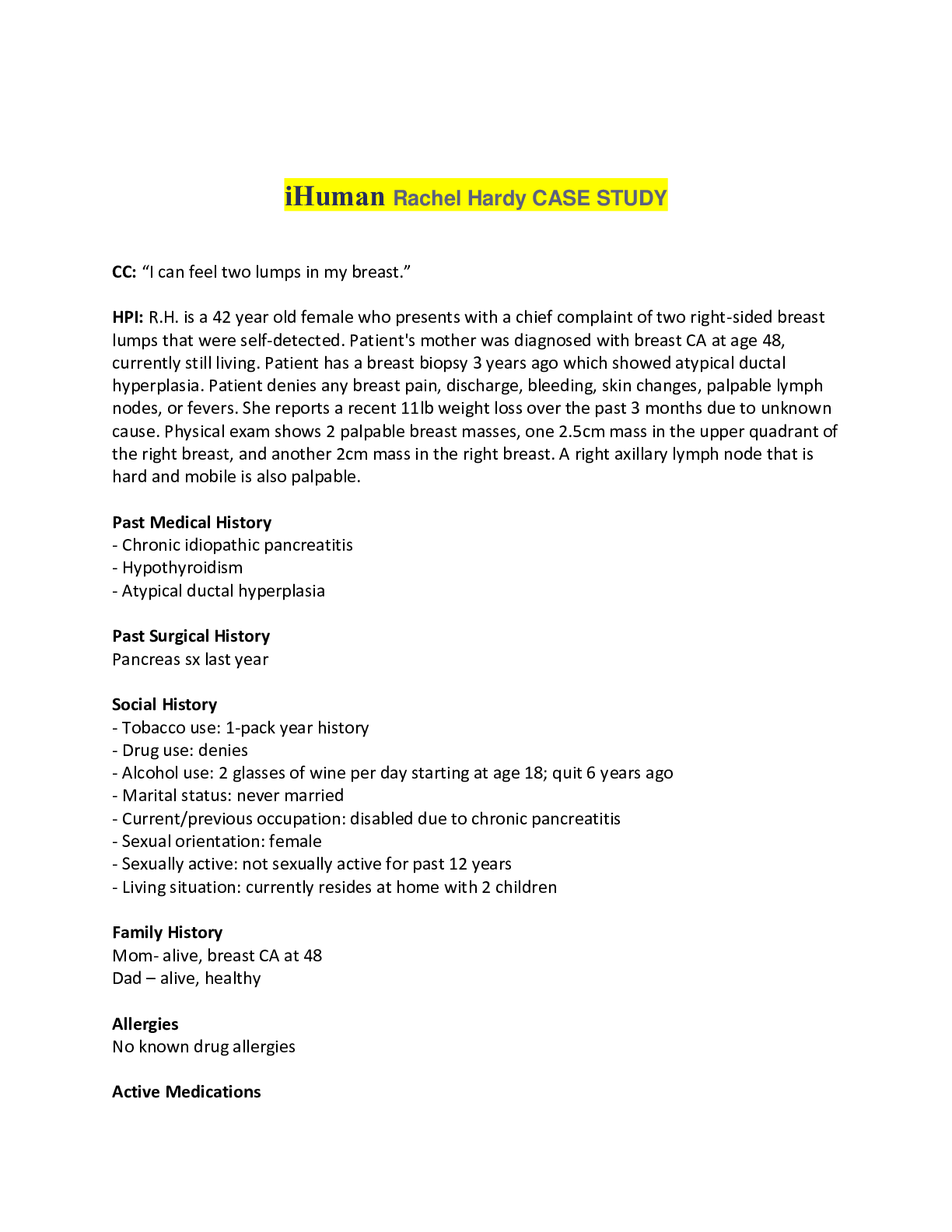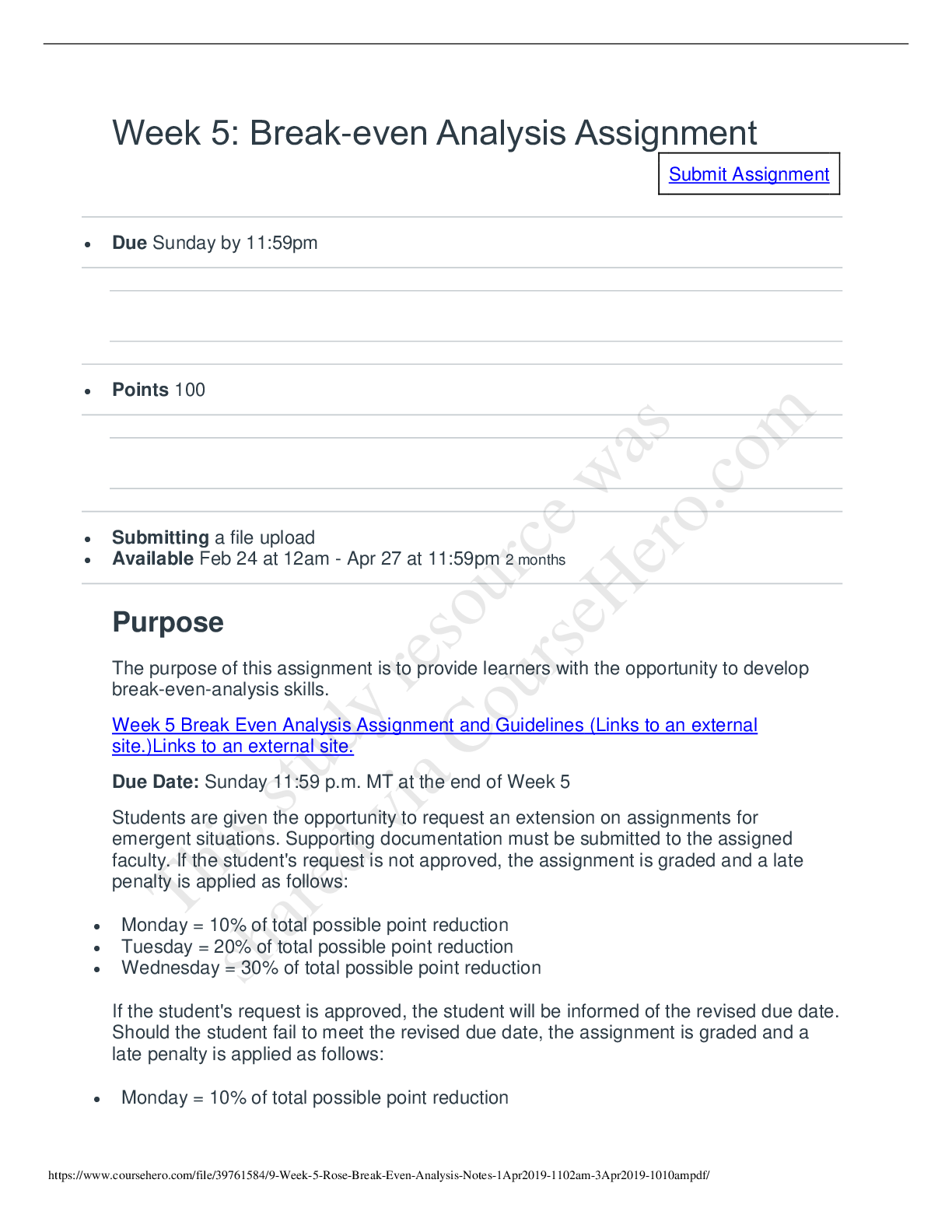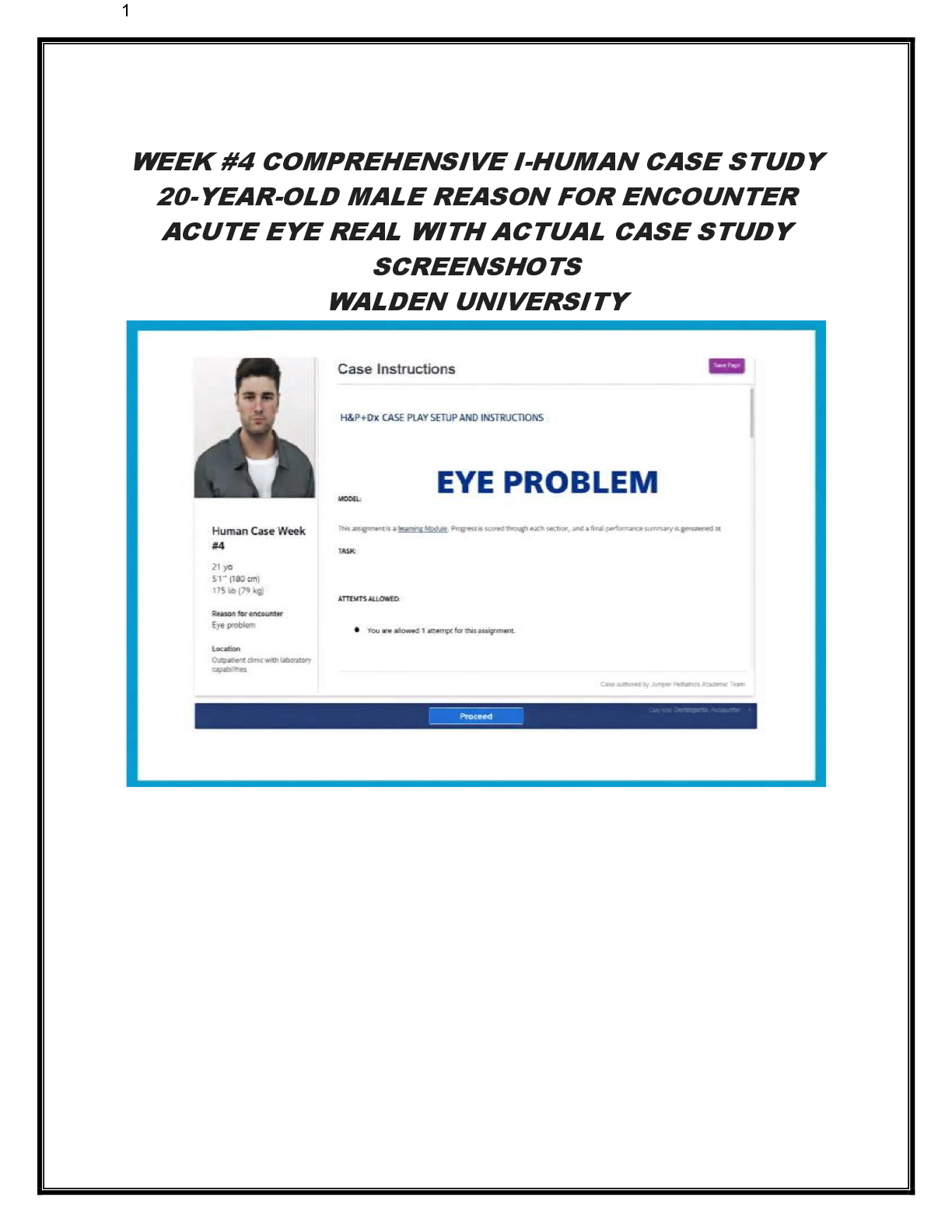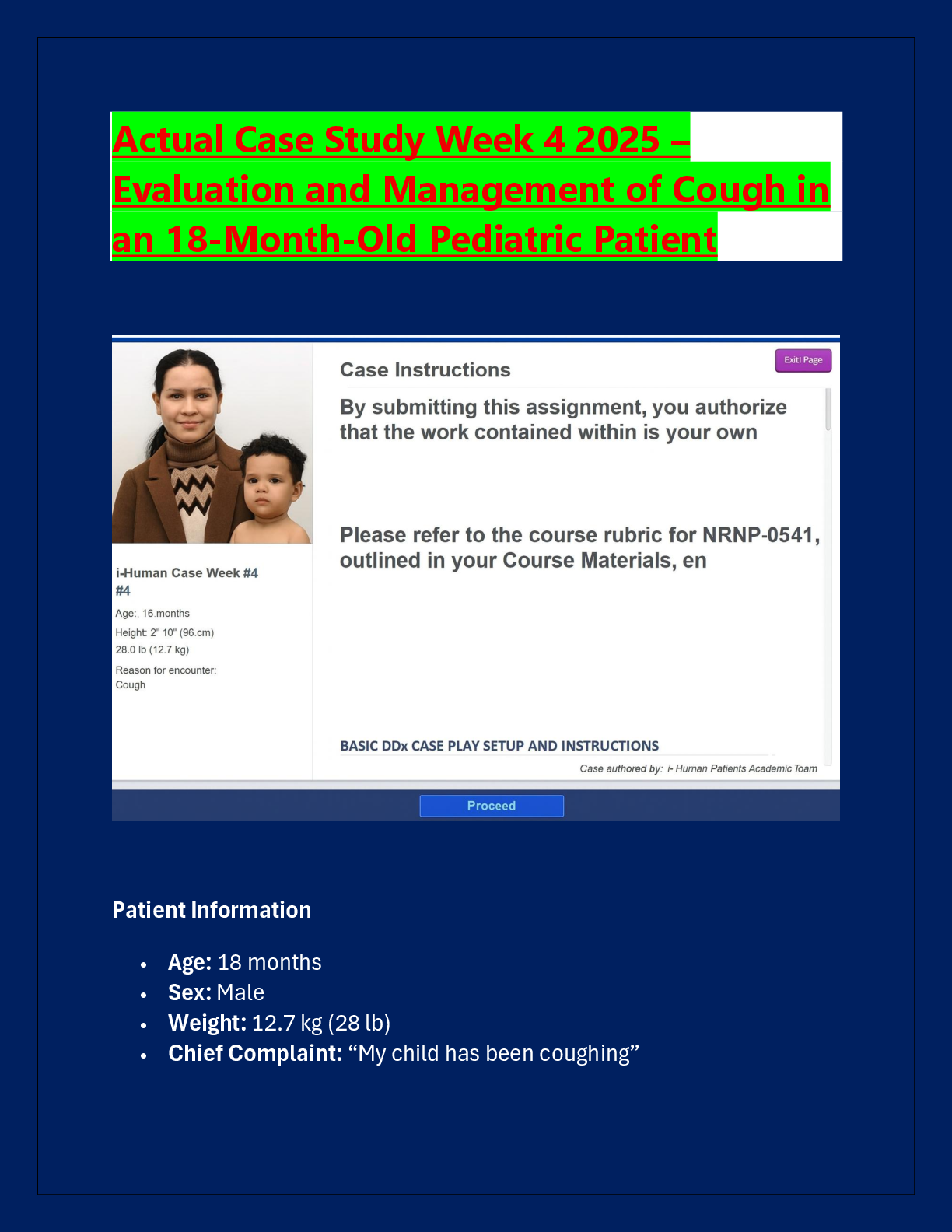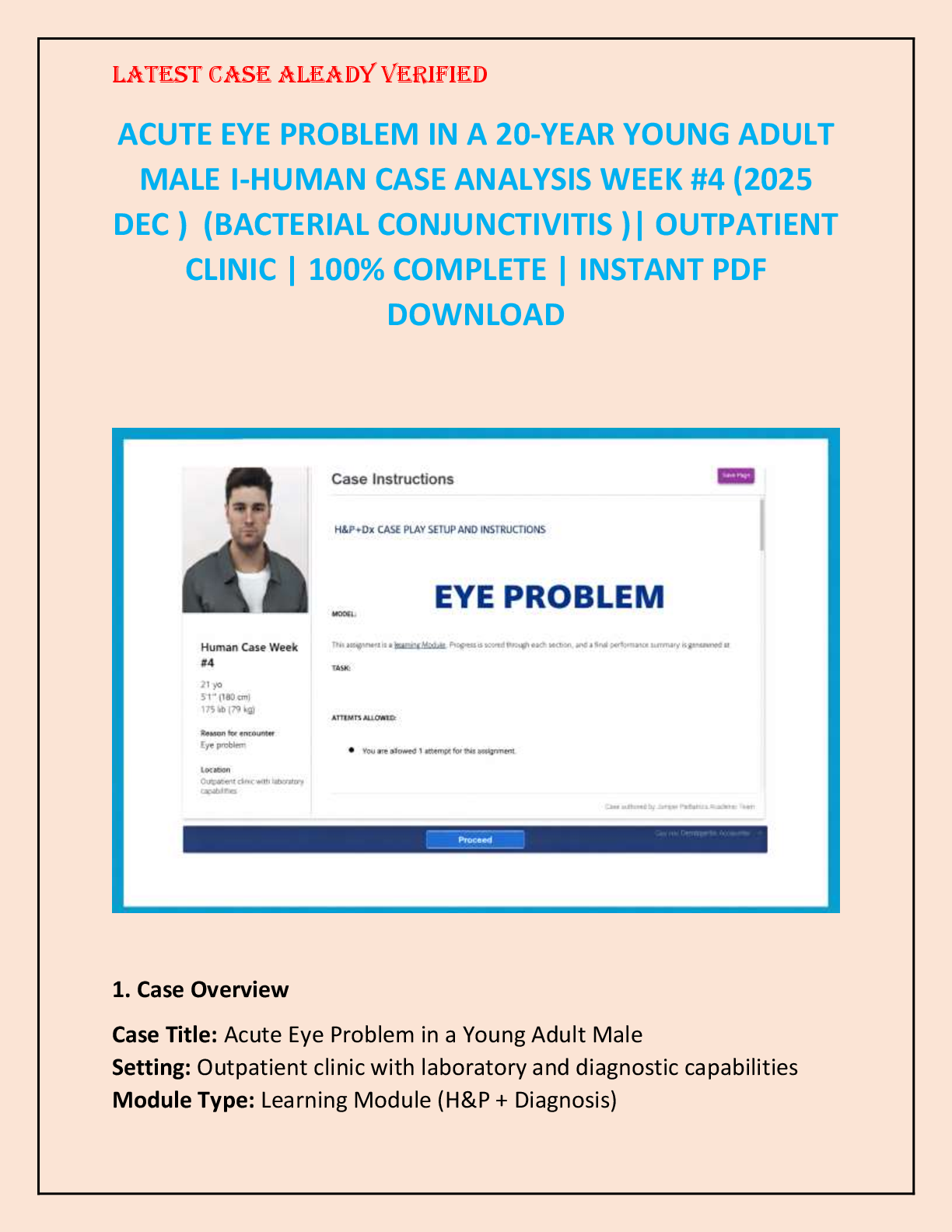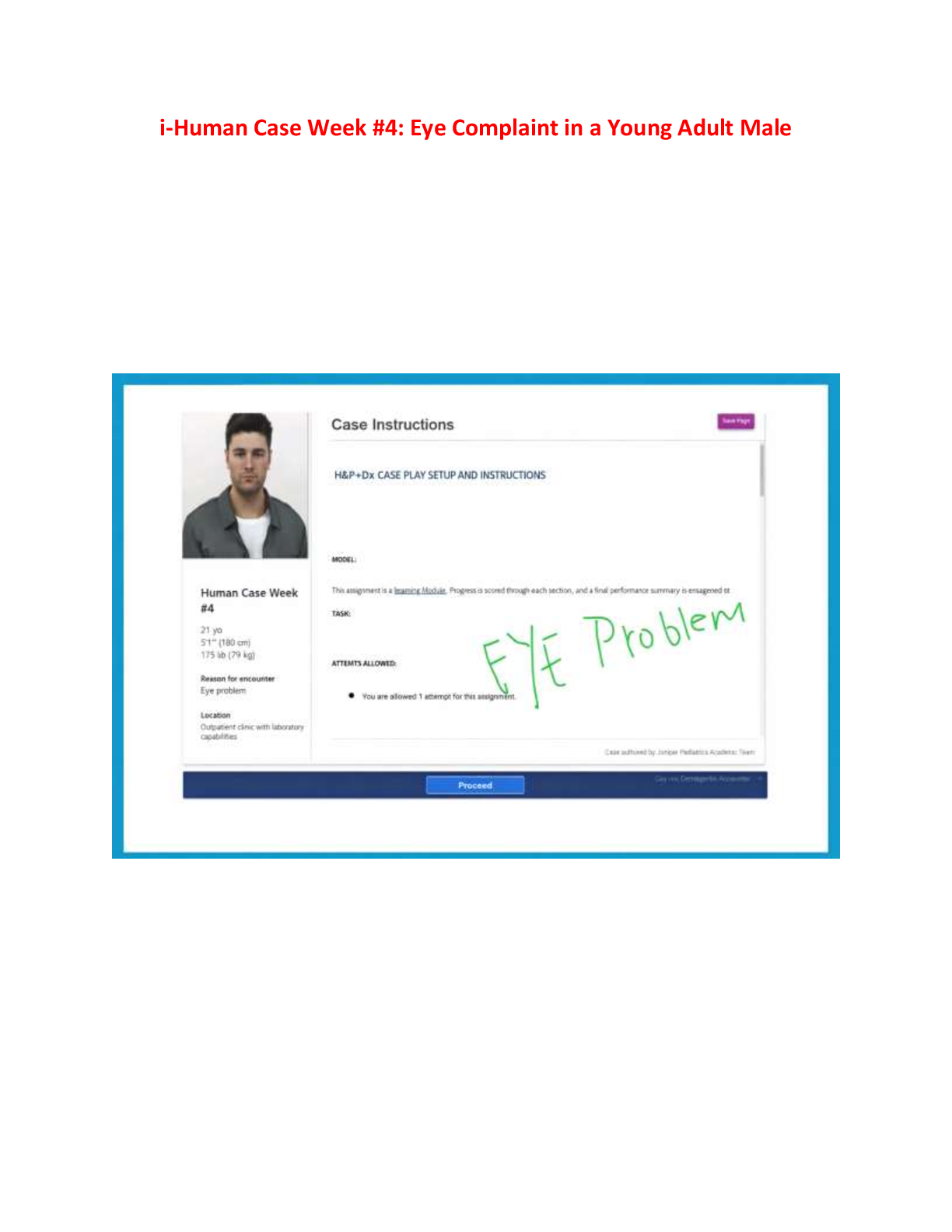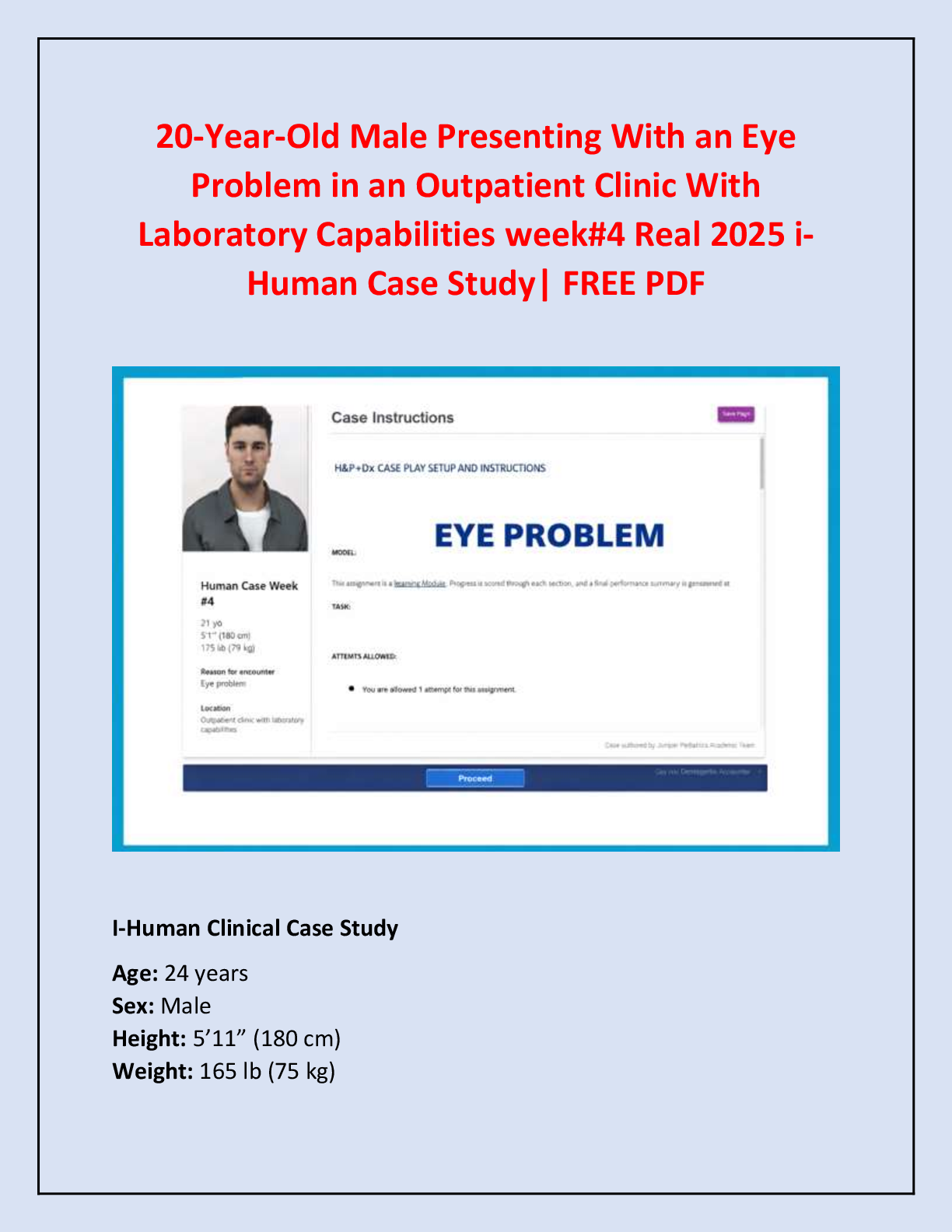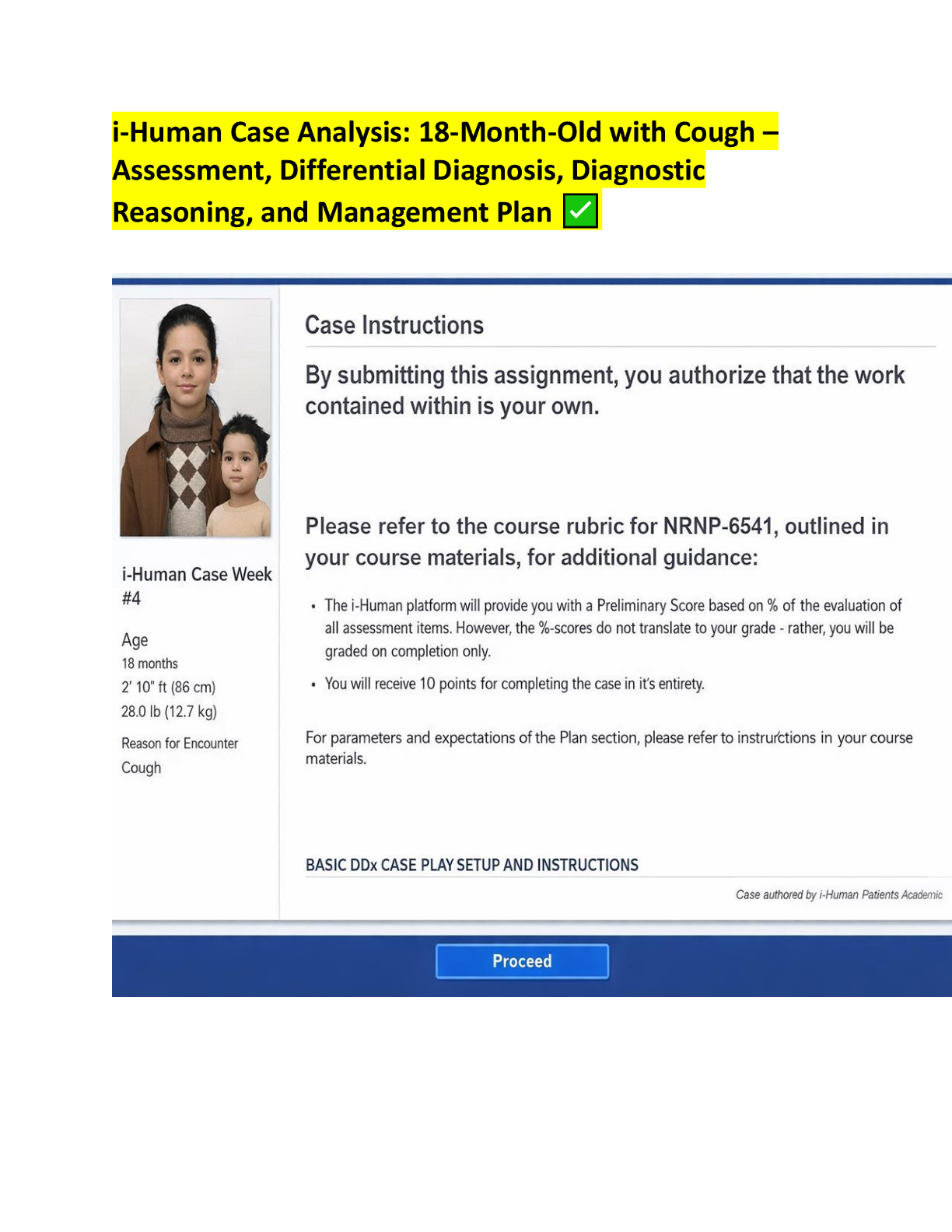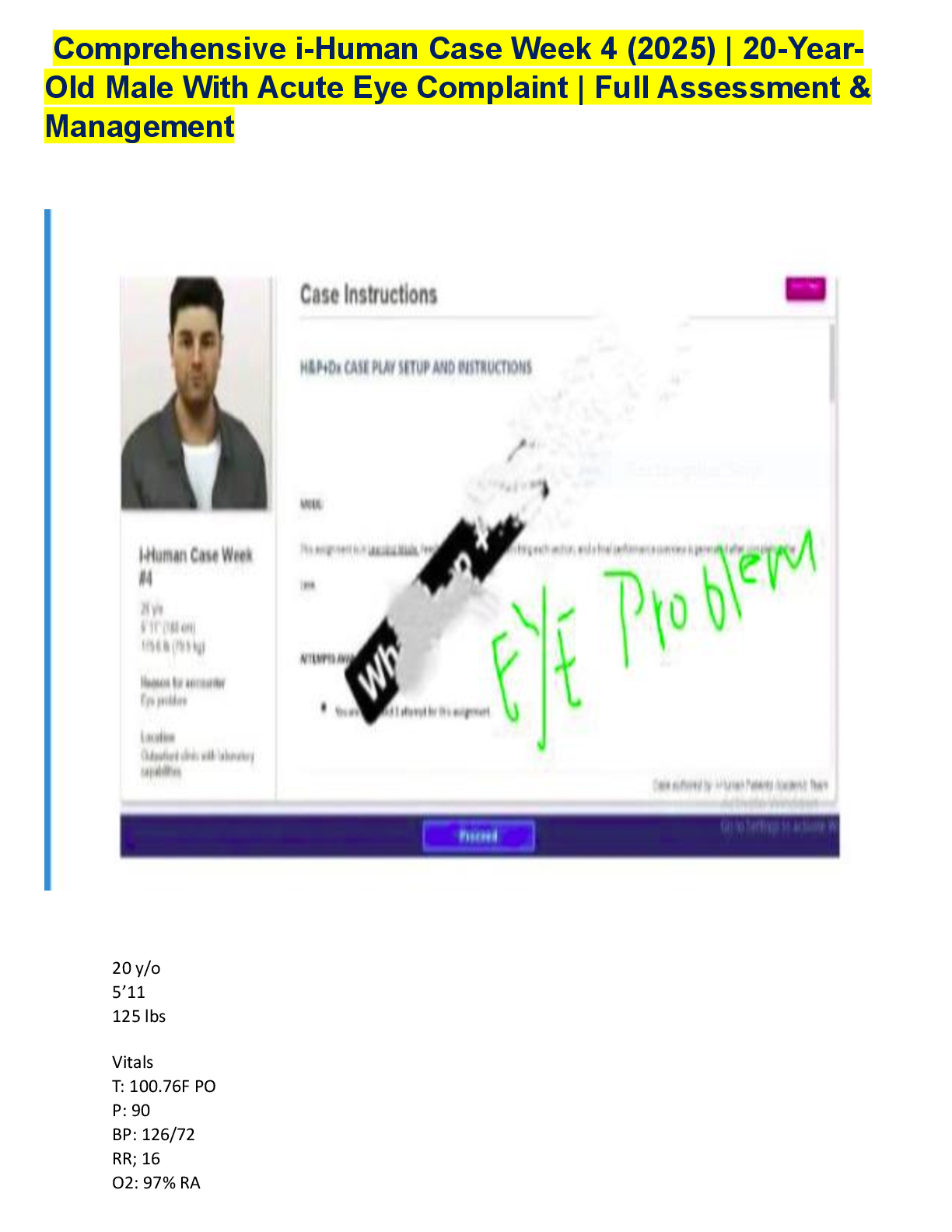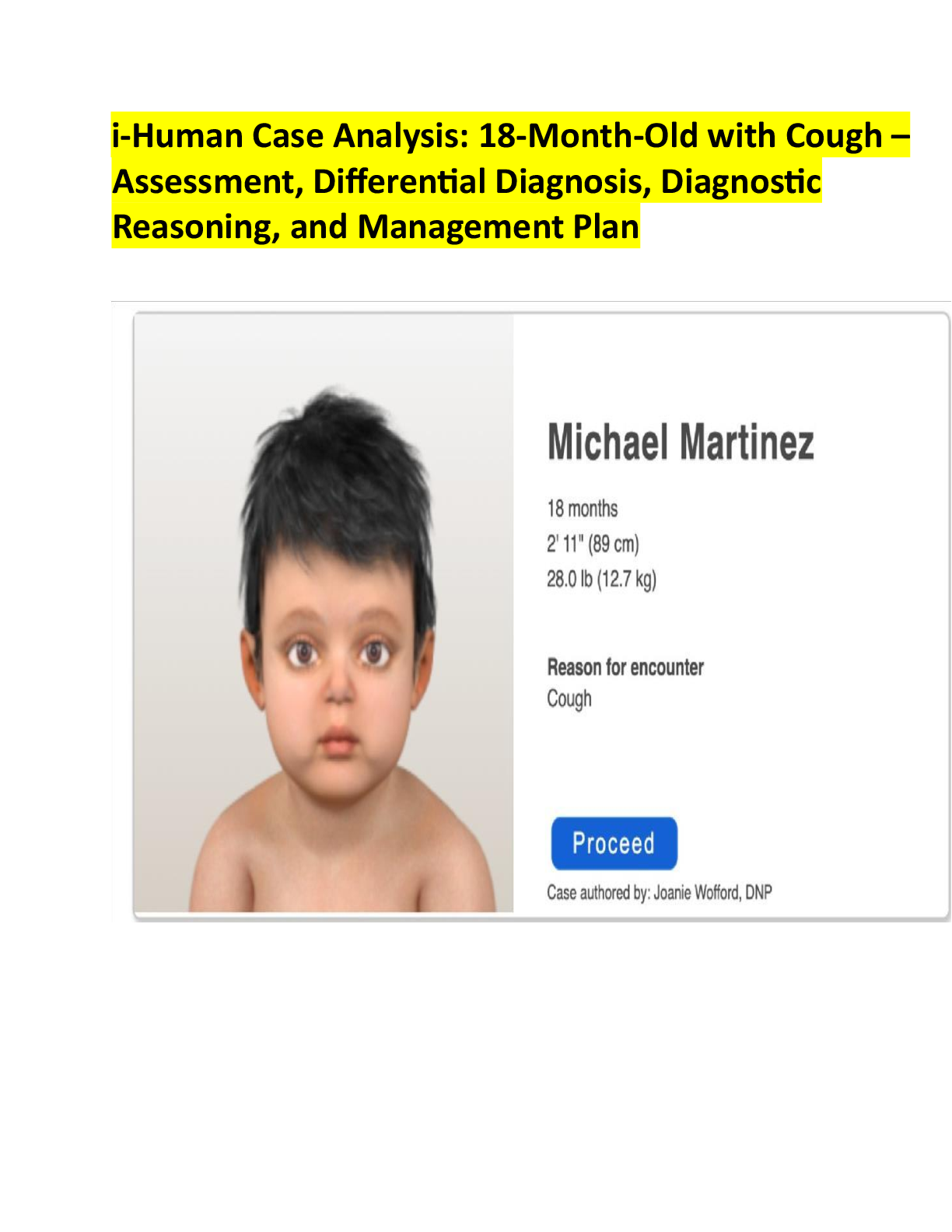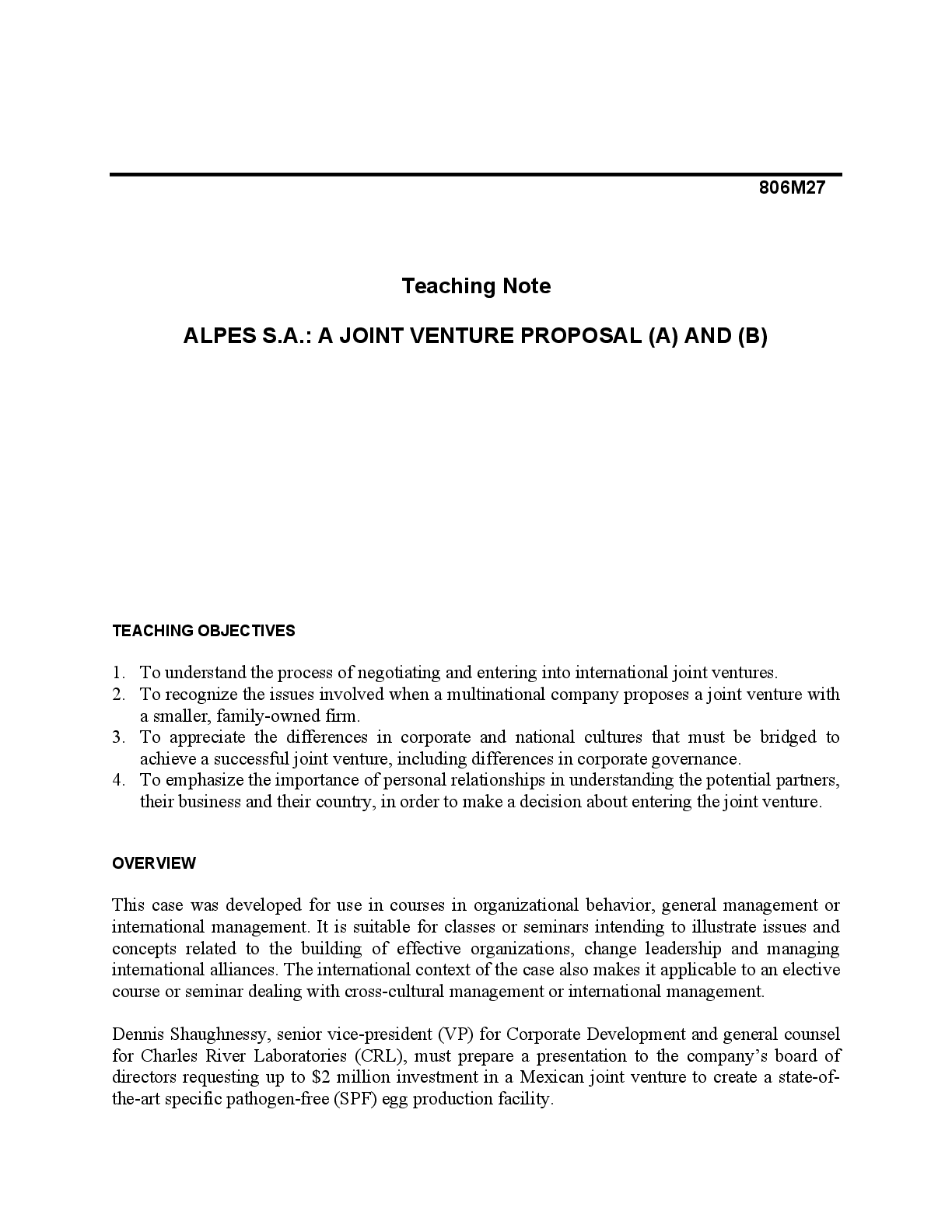*NURSING > CASE STUDY > NR 601 Week 2 COPD Case Study Part 1 (Initial post, faculty and peer responses) (All)
NR 601 Week 2 COPD Case Study Part 1 (Initial post, faculty and peer responses)
Document Content and Description Below
NR 601 Week 2 COPD Case Study Part 1 Purpose Problem-based learning is a methodology … to help students develop the reasoning process used in clinical practice through problem solving actual patient ... problems in the same manner as they occur in practice. The purpose of this activity is to develop students’ clinical reasoning skills using a case-based learning exercise. Through participation in an online discussion forum, students identify learning issues in a self-directed manner which facilitates learning for the entire group. Activity Learning Outcomes Through this discussion, the student will demonstrate the ability to: Demonstrate competence in the evaluation and management of common respiratory problems (WO 2.1) (CO,2,3,4,5) Distinguish between obstructive and restrictive lung disease (CO 2, 4) Develop a management plan for the case study patient based on identified primary, secondary and differential diagnoses. (WO 2.2) (CO 2,4) Interpret pulmonary function test results. (WO 2.3) (CO 2, 4) Due Date: Student enters initial post to part one by … ; responds substantively to at least one topic-related post of a peer including evidence from appropriate sources AND all direct faculty questions in parts one by ... MT. A 10% late penalty will … imposed for discussions posted after the deadline on … , regardless of the number of days late. NOTHING will … accepted after 1… (i.e. student will receive an automatic 0). NR 601 Week 2 COPD Case Study Part 1 Case Study – Part 1 Date of visit: …. A 62 year-old Caucasian male presents to the office with persistent cough and recent onset of shortness of breath. Upon further questioning you discover the following subjective information regarding the chief complaint…….continue Requirements/Questions: Briefly and concisely summarize the history and physical (H&P) findings as if you were presenting it to your preceptor using the pertinent facts from the case. May use approved medical abbreviations. Avoid redundancy and irrelevant information. Provide a differential diagnosis (minimum of 3) which might explain the patient’s chief complaint along with a brief statement (2-3 sentences) of pathophysiology for each. Analyze the differential by using the pertinent findings from the history and physical to argue for or against a diagnosis. Rank the differential in order of most likely to least likely. Identify any additional tests and/or procedures that you feel is necessary or needed to help you narrow your differential. All testing decisions must … supported with an evidence-based practice (EBP) argument as to why it is necessary or pertinent in this case. If no testing is indicated or needed, you must also support this decision with EBP evidence. [Show More]
Last updated: 3 years ago
Preview 1 out of 8 pages

Buy this document to get the full access instantly
Instant Download Access after purchase
Buy NowInstant download
We Accept:

Reviews( 0 )
$12.00
Can't find what you want? Try our AI powered Search
Document information
Connected school, study & course
About the document
Uploaded On
Mar 01, 2021
Number of pages
8
Written in
All
Additional information
This document has been written for:
Uploaded
Mar 01, 2021
Downloads
1
Views
210

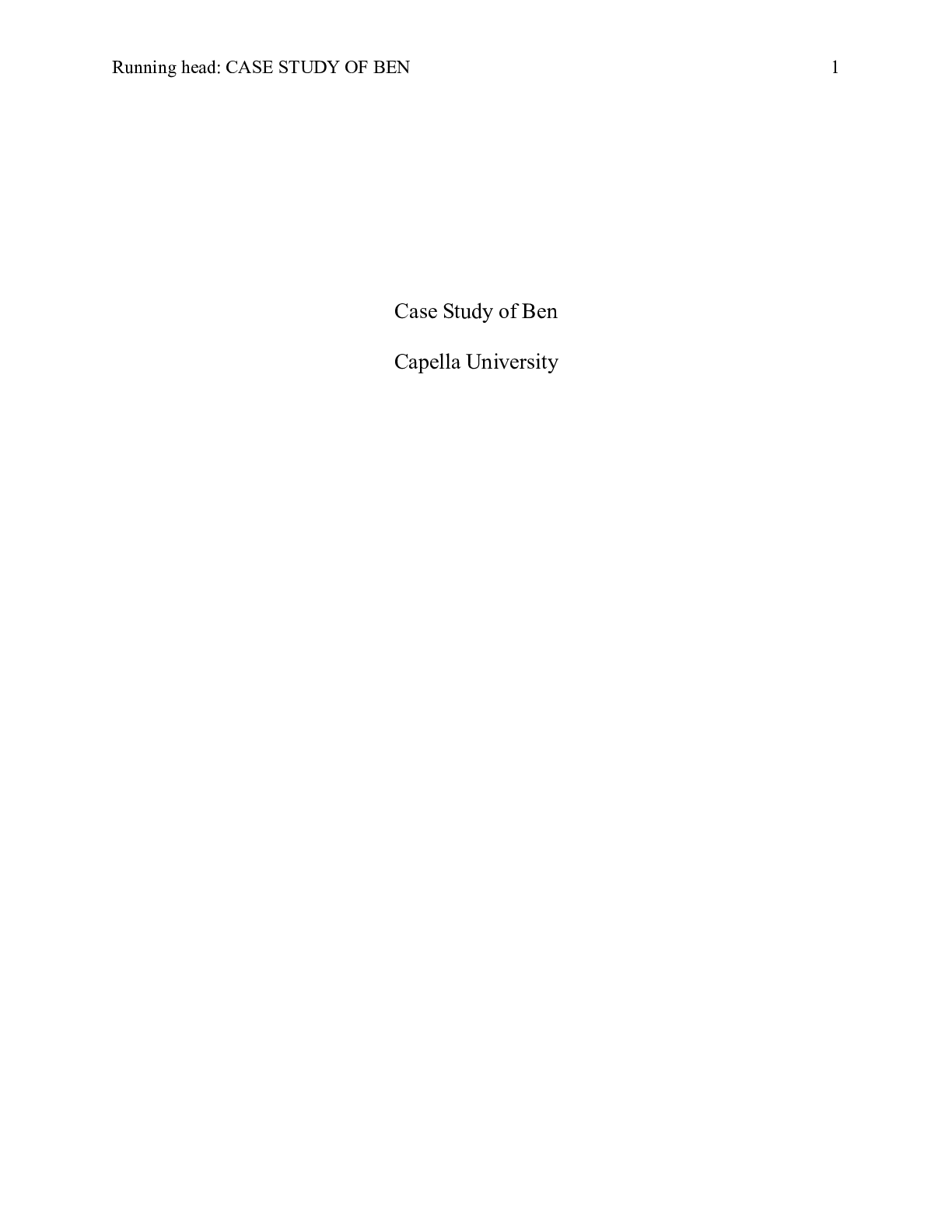

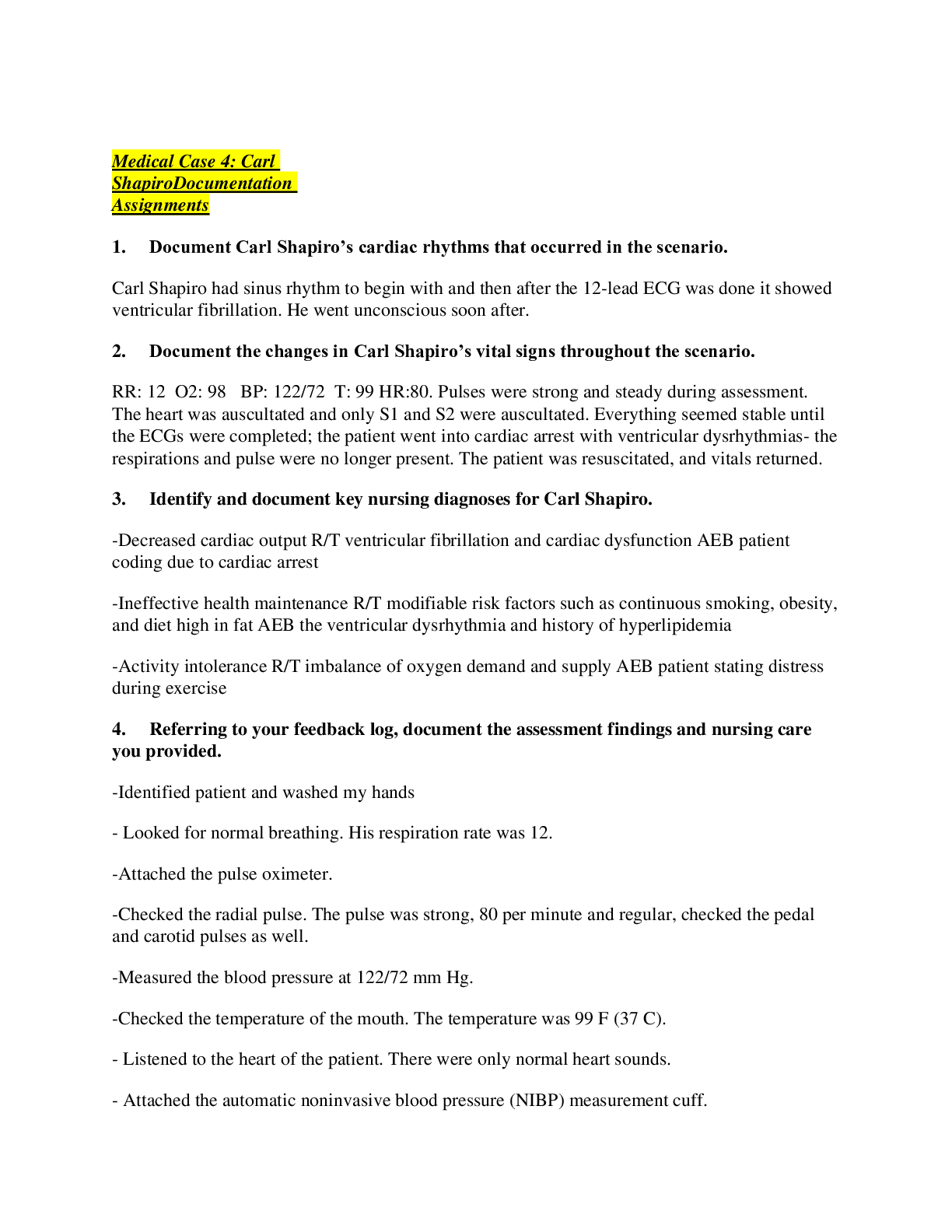

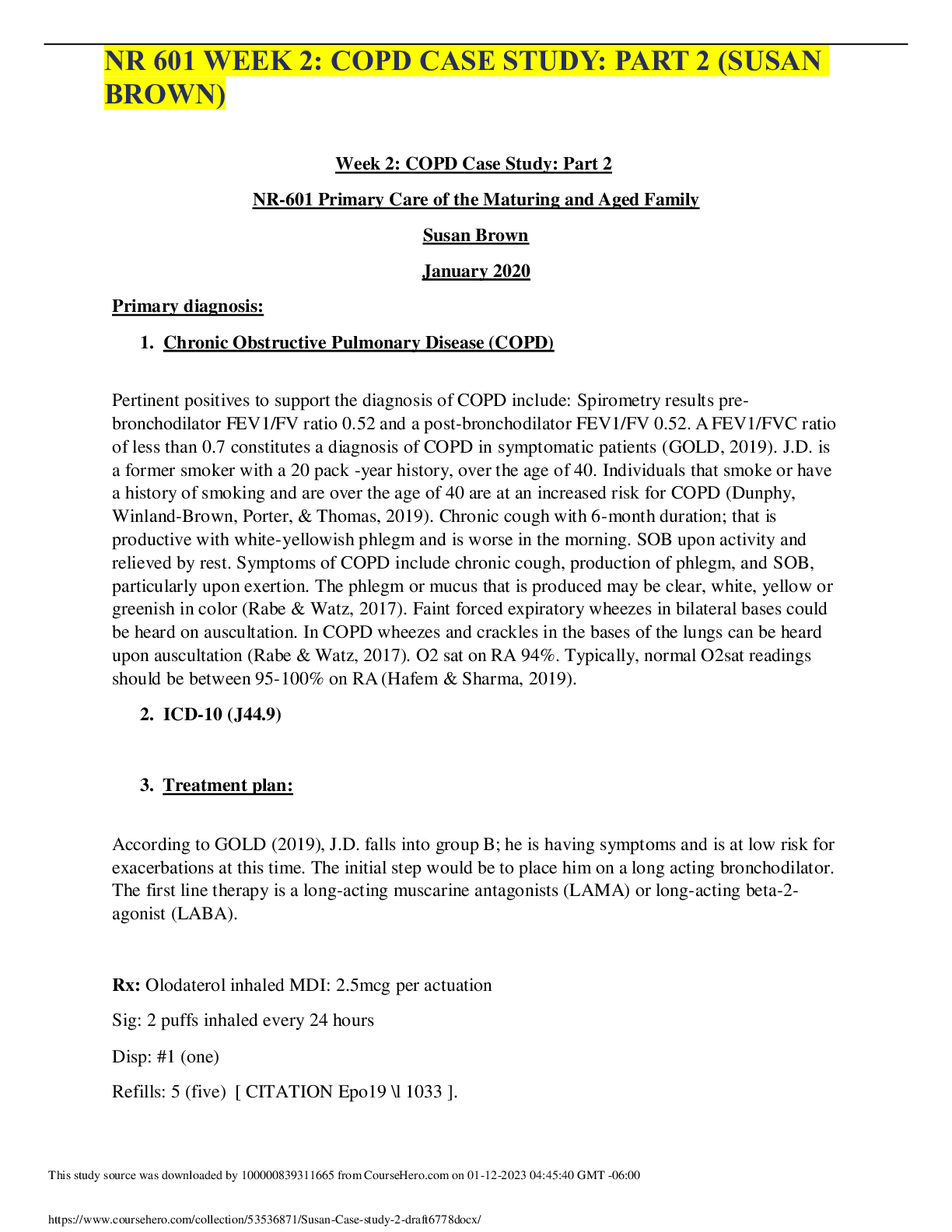
.png)

